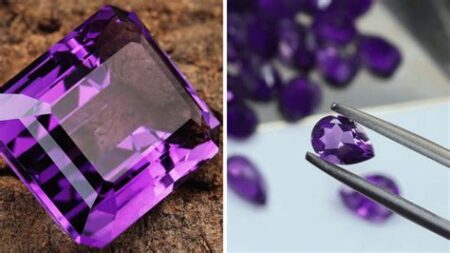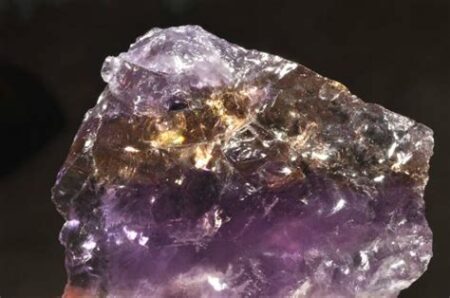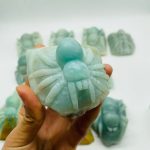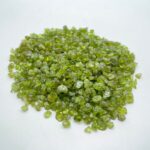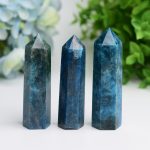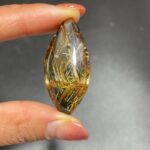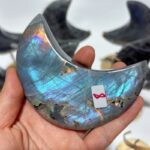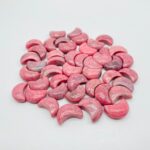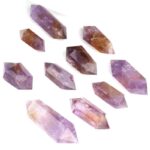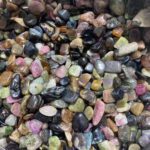Introduction
Celestite, commonly known as celenite, is a beautiful mineral that has captured the attention of collectors and spiritual enthusiasts alike. Its ethereal blue hue and crystalline structure have made it a popular choice for jewelry, home décor, and spiritual practices. However, with the increasing demand for celenite, the market has seen a surge in fake or imitation celenite.

Discerning between real and fake celenite is crucial for consumers who seek the genuine properties and beauty of this mineral. This comprehensive guide will delve into the key differences between real and fake celenite, providing you with the knowledge to make informed decisions and avoid purchasing counterfeits.
Visual Characteristics
- Color: Genuine celenite exhibits a pale to deep blue color, often with a milky or translucent appearance. Fake celenite may appear more vibrant or opaque, with unnatural shades of blue or green.
- Form: Real celenite typically forms in tabular or blade-like crystals, with well-defined edges and faces. Fake celenite may have irregular or rounded shapes, lack sharp edges, or exhibit a grainy texture.
- Transparency: Genuine celenite is usually translucent or transparent, allowing light to pass through it. Fake celenite may be opaque or translucent, blocking light transmission.
- Crystal Structure: Real celenite has a monoclinic crystal structure, which gives it a distinctive cleavage pattern. When cleaved, it forms parallel-sided, rhombohedral-shaped fragments. Fake celenite may not exhibit this specific cleavage pattern.
Physical Properties
- Hardness: Real celenite has a Mohs hardness of 3-3.5, meaning it can be easily scratched by a fingernail. Fake celenite may have a higher or lower hardness, depending on the material used for imitation.
- Density: Genuine celenite has a density of approximately 3.96 g/cm³. Fake celenite may have a different density, which can be detected by weighing and comparing.
- Refractive Index: Real celenite has a refractive index of 1.62-1.64. Fake celenite may have a different refractive index, which can be measured using a refractometer. This test is typically used by gemologists or experts in mineral identification.
Other Distinguishing Factors
- Fluorescence: Genuine celenite often exhibits fluorescence under ultraviolet light, glowing a pale blue or white color. Fake celenite may not fluoresce or may exhibit a different color.
- Conductivity: Real celenite is a poor electrical conductor. Fake celenite made from certain materials, such as glass or plastic, may have different electrical conductivity properties.
- Metaphysical Properties: Many people believe that celenite possesses metaphysical properties, such as cleansing energy and promoting spiritual growth. Fake celenite does not possess these alleged metaphysical properties.
Imitation Materials
Fake celenite is often made from a variety of materials, including:
- Glass: Glass imitations can resemble celenite’s blue color and transparency but lack its crystalline structure and other physical properties.
- Plastic: Plastic imitations are lightweight, flexible, and may have a slightly milky appearance. They lack the hardness and density of genuine celenite.
- Resin: Resin imitations can mimic celenite’s blue hue and shape but are typically softer and less durable.
- Ceramics: Ceramic imitations are made from clay and fired. They are opaque and lack the transparency and cleavage pattern of genuine celenite.
Why Real Celenite Matters
Choosing real celenite over fake alternatives offers several benefits, including:
- Authenticity: Genuine celenite possesses the beauty, mineral properties, and alleged metaphysical benefits that make it a valuable mineral.
- Value for Money: Fake celenite may be cheaper, but it does not offer the same value or durability as real celenite.
- Environmental Sustainability: Real celenite is a natural mineral found in the Earth’s crust. Using fake celenite may contribute to plastic pollution or depletion of non-renewable resources.
How to Avoid Fake Celenite
- Reputable Suppliers: Purchase celenite from reputable sellers who provide clear descriptions and authenticity guarantees.
- Physical Examination: Examine the celenite visually and physically, paying attention to its color, transparency, hardness, and other distinguishing factors.
- Fluorescence Test: Use an ultraviolet light to check for fluorescence. Genuine celenite should fluoresce pale blue or white.
- Conductivity Test: Test the celenite’s electrical conductivity using a simple multimeter. Genuine celenite should be a poor conductor.
- Seek Professional Appraisal: If you are unsure about the authenticity of celenite, consider seeking a professional appraisal from a gemologist or mineral expert.
Applications of Real Celenite
- Jewelry: Celenite’s unique blue hue and crystalline structure make it a captivating choice for jewelry, such as pendants, earrings, and bracelets.
- Home Décor: Celenite clusters, spheres, and wands are popular decorative elements that are believed to enhance the energy flow and create a serene atmosphere in homes.
- Spiritual Practices: Many spiritual practitioners use celenite for meditation, energy cleansing, and crystal healing. It is believed to promote spiritual growth, emotional balance, and psychic development.
Conclusion
Distinguishing between real and fake celenite is essential for consumers who desire the genuine beauty, properties, and benefits of this mineral. By understanding the key differences and employing the tips outlined in this guide, you can confidently make informed purchasing decisions and ensure that you possess genuine celenite.
Remember, real celenite offers authenticity, value for money, and environmental sustainability. Embrace the ethereal beauty and alleged metaphysical properties of this unique mineral by choosing genuine celenite over fake imitations.

